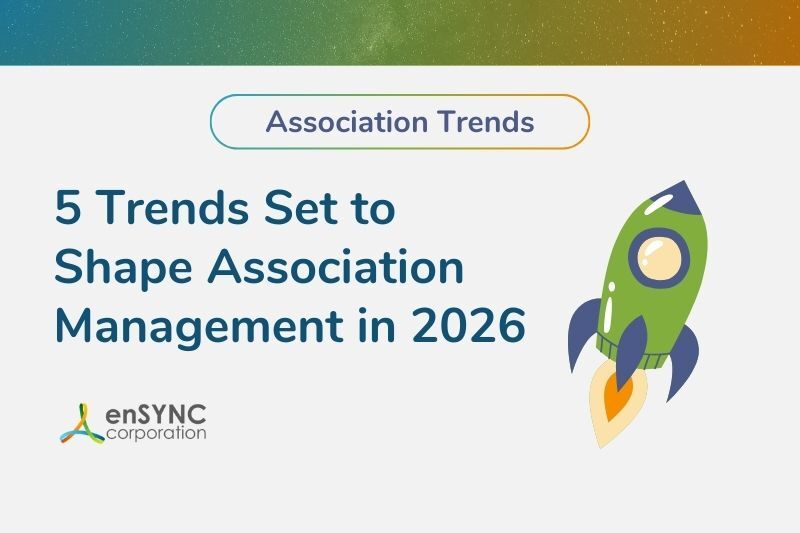Technology & digital transformation | Strategy & planning | Nonprofits
The Nonprofit's Guide To Digital Transformation
July 29, 2021
|
A digital transformation can enhance the way your nonprofit organization operates from the ground up, bringing your organization up to speed on the latest in technological innovation so it can thrive on the new digitally-based economic landscape.
Digital transformation is more than just inevitable - it’s necessary. Through advancements in hardware, software, and connectivity, your organization can reduce costs and gain efficiency for maximum productivity. Technological innovation can give your nonprofit the tools it needs to focus resources on fulfilling its mission with maximum impact. This guide will teach you how to make it possible.
Why digital transformation?
The latest advancements in technology let you do so much more with less. Cloud-based software allows employees to collaborate easily from any location while simplifying workflows for increased productivity. Advanced reporting tools let you budget with flexibility and produce reports with real-time data.
The benefits of digital transformation are numerous and continue to increase through advancements in hardware and software. Technological innovation does do more than just increase process efficiency. It breaks down walls between departments and unites them through cloud-based solutions to form a cohesive operational unit that brings the entire organization together under one mission.

Benefits of Nonprofit Digital Transformation
Digital transformation is an investment that can pay massive future dividends. From donor management to service delivery, hardware and software innovations benefit nonprofits in multiple ways that include:
Access to world-class technology
Digital technology makes it possible for smaller and medium-sized nonprofit businesses to leverage innovative tools that were once available exclusively to larger corporations with huge budgets. It’s well known that nonprofits typically have smaller IT budgets - many operate with internal staff or resources up to a third of the size of a similar-sized business.
Digital innovation through managed services such as cloud-based software allows nonprofits to gain a competitive advantage by reducing operating costs by 50 percent. That means your nonprofit can have valuable access to the same top-level services leveraged by larger for-profit businesses and corporations for the price of a subscription.
Cloud-based managed services
Your digital transformation starts with network connectivity at the foundation of your organization and extends up into the cloud. Cloud computing allows nonprofits to facilitate collaboration, gain productivity, improve security and increase mobility in the digital workplace.
From deploying software to remote monitoring, cloud-based managed services are a necessary initial step towards unleashing a new wave of possibilities for improved operations across all departments.
Improved communication and collaboration
Cloud-based software lets employees effectively communicate on the fly while working on shared projects. No matter where they are, cloud computing allows employees to access software and files wherever there is an internet connection. The internet makes communication more accessible than ever before through video call technology, secure email, and chat applications. These integrated communication tools ensure everyone in the organization is connected securely and in real-time, no matter where they are located.
Donor communications also benefit from digital transformation through donor management and event software that automates donation collection and facilitates event planning. It’s never been easier to increase awareness and keep stakeholders in the loop. The latest in software innovation makes it all possible with better results in less time.
Streamlined processes and increased efficiency
Technological advancements give nonprofits the same tools and resources enjoyed by commercial businesses. McKinsey’s research suggests that banks using IT-based process automation were able to generate a 50 percent improvement in productivity.
That same technology is now available to nonprofit organizations of all sizes. Integrated cloud-based software allows employees to do more with fewer resources, reducing their reliance on time-consuming manual tasks and manual processes.
-2.png?width=650&name=Copy%20of%20Quote%20Graphics%20(1)-2.png)
The overall result: improved productivity that saves time and reduces costs. Technological innovation gives you the power to free employees from administrative burdens. This ensures that resources can be directed towards providing higher-value services to stakeholders and the communities your organization serves.
Increased network and data security
As more businesses migrate to the cloud, cybersecurity concerns have come to the forefront among nonprofit executives concerned about the organization’s data security. Nonprofits looking to increase donations must leverage online payment processes to facilitate donations without risking the effects of a cybersecurity attack that can irreversibly harm the organization. An investment in managed security services ensures that you always have multiple layers of reliable protection that protect critical company and donor data.
Integrated operations between departments
Software connectivity on the cloud can break down walls between departments, increase productivity, and reduce redundant time-consuming tasks.
Software integrations on the cloud allow donor, payment, and accounting information to be synced and simplified across departments for access by credentialed employees. Workflows can be automated so employees can save time and allocate resources to areas of the organization that maximize value.
Cloud computing makes it possible by uniting a CRM system with automated email marketing software, both of which can be integrated with third-party donation applications. Everything stays updated and documented, with a comprehensive paper trail that saves time and reduces accounting complexity come year-end. From the ground up, digital transformation makes it possible with integrated applications that can include:
- Customer relationship management system (CRM)
- Accounting software
- Learning Management Software
- Advocacy solutions
- Email marketing applications
- Event management/fundraiser event software
- Fundraising software/peer to peer fundraising applications
- Online donation processing software
- Credit card processing applications
- Donor/donation management
- Social media management
- Human resources software
- Project and program management
- Payment processing
- Inventory management
- Payroll software
- Automated Clearing House (ACH) processing
An improved digital mobile-based workplace
Many workplaces have now gone digital, and the benefits are too numerous to go back. Workers burdened by long commutes are increasingly being freed from their desks while saving their employers office costs in the process.
The digital transformation has made it possible through cloud-based managed services. Innovative software and hardware solutions now allow workers to access the tools they need to perform their work from anywhere there is an internet connection. From video calls to cloud-based storage, technological innovation makes it possible for nonprofits of all sizes to reduce costs, improve efficiency and provide high-value services at any location.
Enhanced data-driven decision making
The future is undoubtedly data-driven. That is why the latest cloud-based software enhances short and long-term decision-making with powerful tools and customized dashboards based on real-time data. Whether it's the results of an email marketing campaign or a recent online fundraising event, integrated software helps managers quickly capitalize on new opportunities or take timely corrective action.
Cloud-based software also lets managers let go of outdated legacy systems that compartmentalize the organization. Innovative tools now give managers real-time visibility across all areas of the organization so they can assess the performance of all departments at once and in real-time.
How to get started with digital transformation
Transforming your nonprofit starts with an audit that determines the efficiency and productivity of your organization across various departments and among employees. From there, we can create a customized digital transformation plan that includes goals for maximizing the ROI of your investment.
Nonprofit organizations have unique needs. Understanding those needs is critical to developing an effective digital transformation strategy - one that streamlines processes, improves workflows, reduces costs, and delivers greater value to the communities you serve.
Recent Posts

5 Trends Set to Shape Association Management in 2026
As 2026 begins, associations are standing at the edge of some major shifts. Member expectations are changing, technology keeps opening new...

The Best of the Blog 2025 — A Year in Review
From forward-looking trend analyses to powerful case studies and thought-provoking conversations, the enSYNC blog featured a host of great content in...
Enjoying our blog?
At enSYNC, we want to empower associations and nonprofits to make well-educated decisions. If you want our industry knowledge (and other free guides) sent directly to your inbox, fill out the form below.


